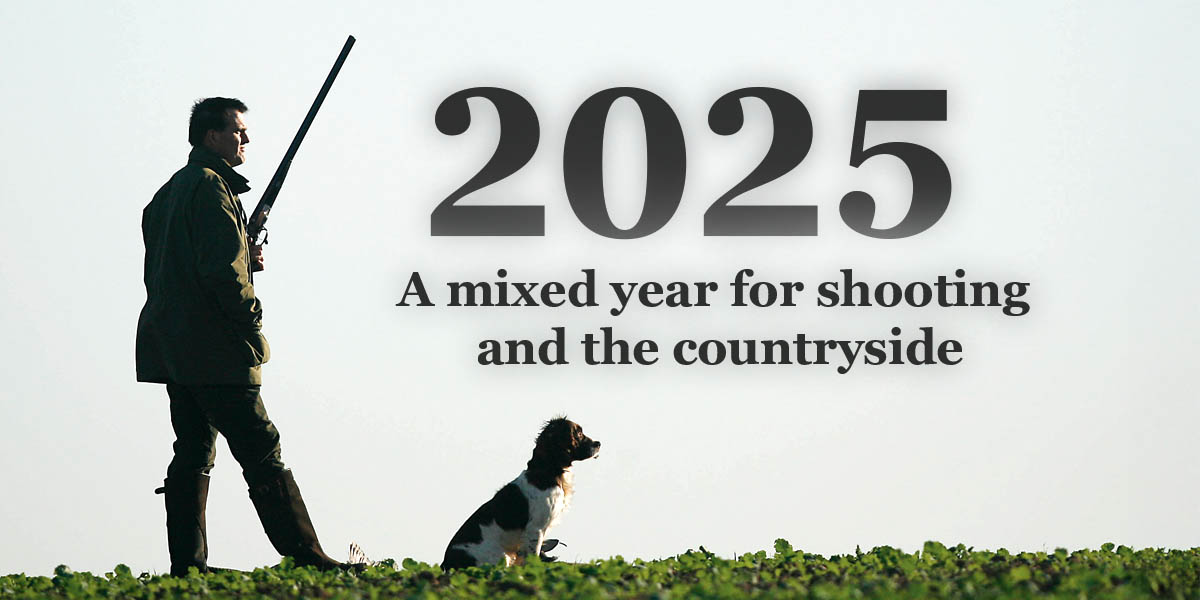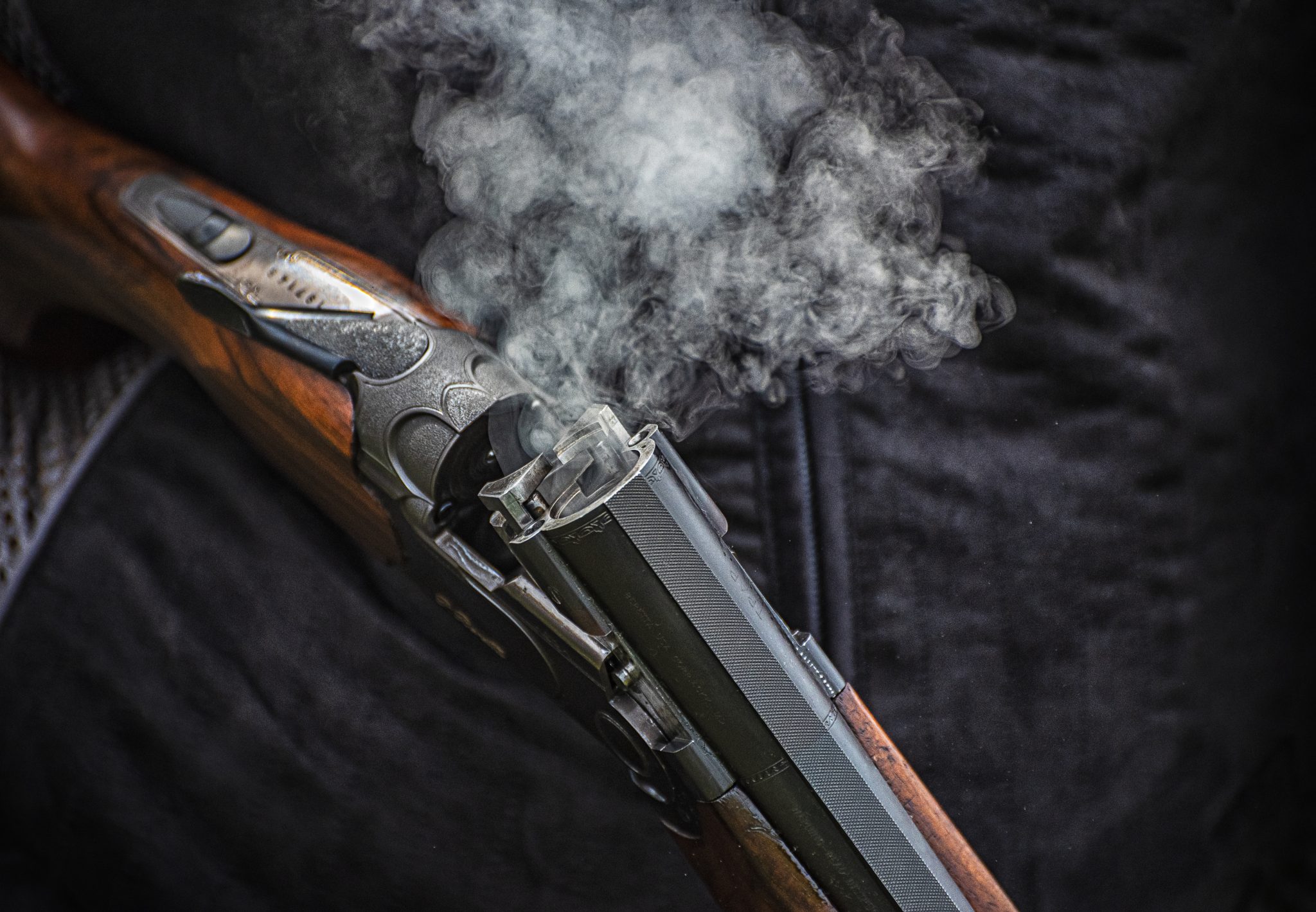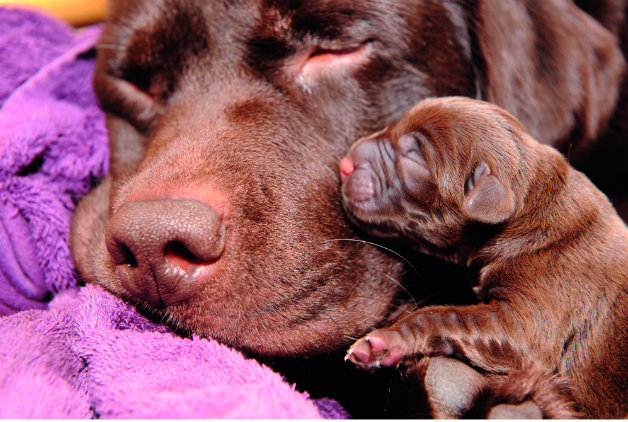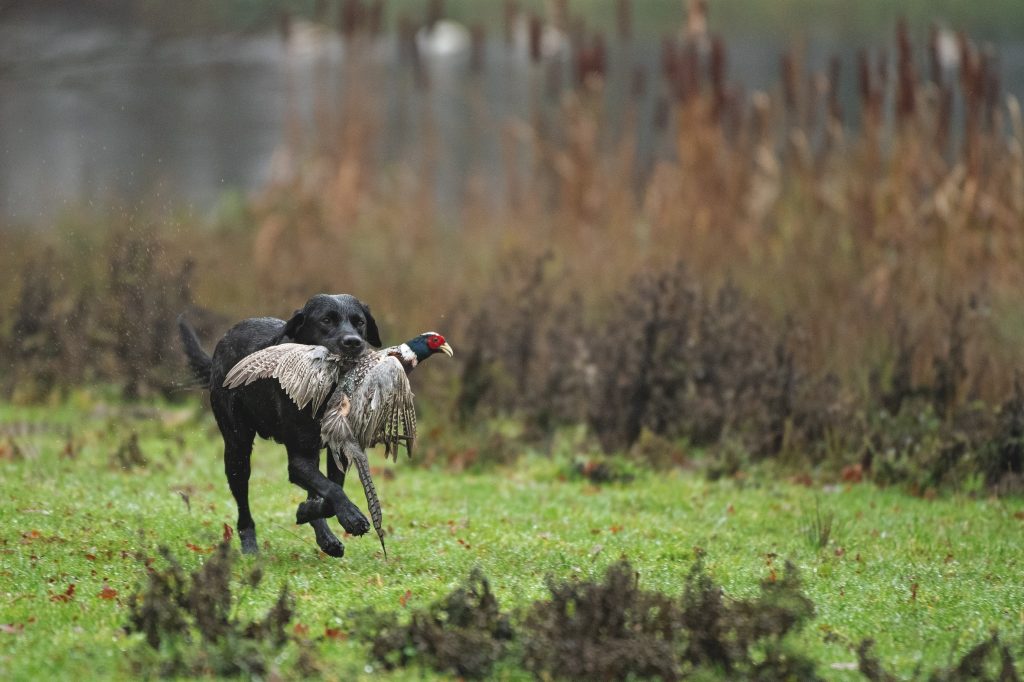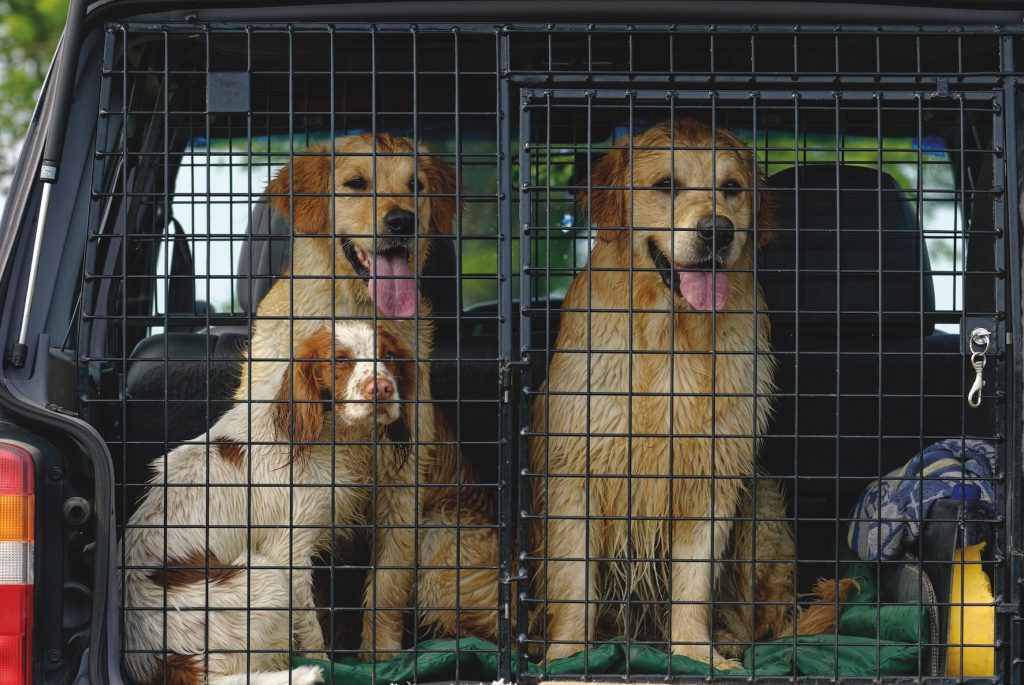Win CENS ProFlex DX5 earplugs worth £1,149 – enter here
Do chocolate Labradors deserve a bad reputation?
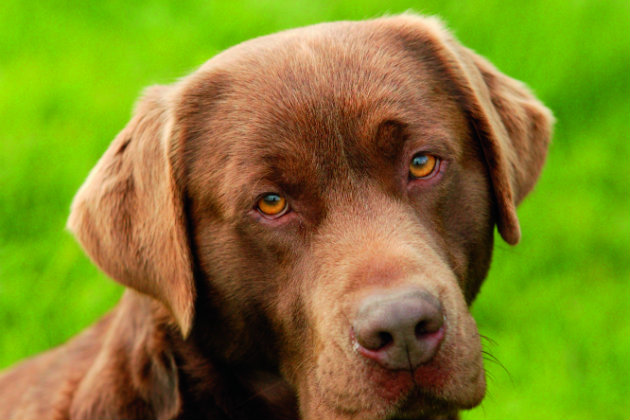
So how does the colour of a chocolate Labrador happen? A variety of different Labrador matings, including black to black, can produce a brown, or chocolate Labrador.
If you mate two brown Labs together you are most likely to have similarly coloured puppies, although you may also get yellow.
However if a dog is bred for colour it does reduce genetic diversity.
In addition a study undertaken by the Royal Veterinary College a few years ago, based on data from 33,320 Labradors registered with UK vets, found that the average lifespan of a non-chocolate Labrador is 12.1 years, while a chocolate Labrador will tend to die a year and three months earlier.
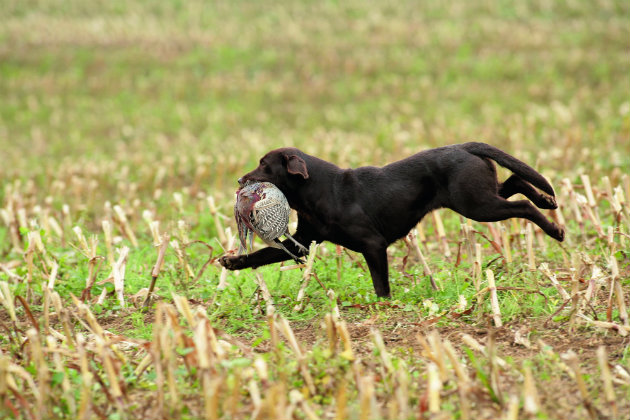
There is no reason why a chocolate Labrador shouldn’t make a good picking-up dog
So what about the abilities of chocolate Labradors in the field?
The working ability of chocolate Labradors cannot be judged simply by the colour of their coat. While some show little if no ability as gundogs, others can equally match any black or yellow for their drive and game-finding ability.
Sadly chocolate Labradors have earned a bad name as ineffective working gundogs – because most are not bred to do the job. While there are some deeply committed devotees of working chocolate Labradors, who are doing a sterling job in breeding dogs any shooting man would be proud to own, the large majority of Labradors with this coat colour are produced primarily for the pet market.
Breeders of top-quality chocolate Labradors
- When colour becomes the driving force in the popularity of any animal, quality and purpose all too often fly out of the window. Search the internet for chocolate Labrador puppies and you will find hundreds, but there are only a handful of specialist breeders of top-quality chocolate Labradors for the show ring and even fewer breeding them as working gundogs.
- The vast majority of chocolate Labradors are bred by pet owners who have a bitch, fancy having a litter and are fairly confident they can sell them easily. Similarly, the large-scale “commercial” Labrador breeders (and the Kennel Club’s statistics show some are producing up to six litters and more in a 12-month period) pump out chocolate puppies because they know they are good sellers.
- The next clue in the search for a reason why chocolate Labradors have a poor reputation as working gundogs is in the pedigree — the document that provides a vital insight into the genetic make-up of any dog. Study the pedigree of most chocolate Labradors and you will see generations of dogs with chocolate-derived names such as Ovaltine, Chocolate Surprise, Hot Chocolate, Aero Girl and so on. All these are indicative of years and years of indiscriminate breeding driven by the colour of the dogs rather than any other attribute.
- In comparison, well-bred black and yellow working Labradors will have what is termed as “depth of breeding” and will be the result of years of careful selection for working ability and inevitably include dogs carrying established kennel affixes that have excelled as working dogs and in field trials.
- So for the most part, any chocolate Labrador that turns up on a shoot is most probably the family pet and can’t be blamed for any of its failings because genetically it has no working ancestry.
Chocolate breeding in the pedigree
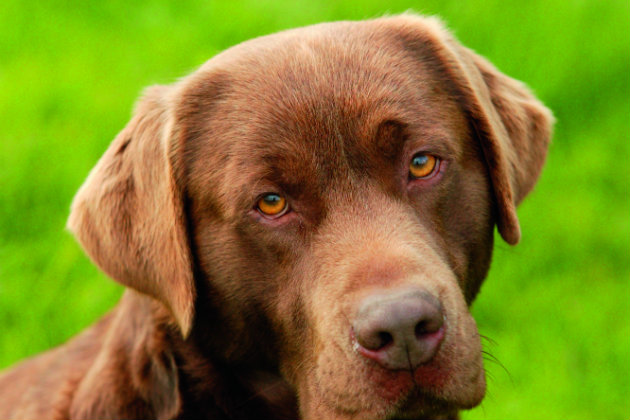
Fenway Timber is also known as the ‘brown bear’
In a black-to-black mating we undertook at Fenway Labradors around 12 years ago, we knew that there was some chocolate breeding way back in the pedigree and we knew those dogs had shown good working ability. This mating was not intended nor expected to produce chocolates, so we were surprised when it did. One of those puppies, a bitch, was bought by one of the UK’s best-known field trial handlers, who explained that the puppy was to be the foundation of a line that would hopefully produce the UK’s first chocolate field trial champions within 10 years. We retained a dog puppy.
While the bitch produced several litters I understand there were few chocolates — such is the difficulty in a breeding programme combining colour with ability. But our dog puppy is still a regular and accomplished member of our picking-up team and has been a great ambassador for his colour, earning the nickname of “the brown bear”. His black litter brother was exported to the US and his owner has just returned for another dog from us. This proves that chocolate breeding in a dog’s pedigree — providing it is the right chocolate breeding — should be no detriment to the working ability of any Labrador.
Buying or breeding a chocolate Labrador?
- Anyone who wants a chocolate Lab as a shooting dog must make sure they buy from someone who is offering puppies from proven working bloodlines on both sides of the pedigree.
- If you have a well-bred black or yellow bitch and you want to use a chocolate stud dog with the intention of producing at least some chocolate puppies in the litter it is important to use a well-bred dog and one that will pass on his colour genes.
- Coat colour genetics in Labradors is a complex subject, so do your research thoroughly. Litters containing all three colours are not uncommon if the sire and dam carry all the colour genes.
History
Chocolate Labradors are not new. In 1889, “pale chocolate” retrievers were exhibited at a Kennel Club show and the late Mary Roslin Williams — the doyenne of dual-purpose Labradors — suggested that the original “liver” Labradors resulted from outcrosses to pointers, flatcoated retrievers or possibly Chesapeake Bay retrievers.
The first chocolate Labrador to run in a field trial before World War I was a bitch called Nawton Pruna owned by renowned Labrador breeder Countess Howe.
A devotee of working chocolate Labradors
Mrs Walls-Duffin’s Grangemead kennel, based in Warwickshire, is a leading light among the few UK devotees of working chocolate Labradors. The kennel was founded on the Styleside bloodline of Ged Leeson, who has been one of the pioneers determined to prove that coat colour should not adversely affect working ability.
“I liked the colour of chocolate Labradors and I was up for the challenge to prove their ability in the field. And remember that at the time I started most chocolate Labradors were from show-bred bloodlines,” said Mrs Walls-Duffin.
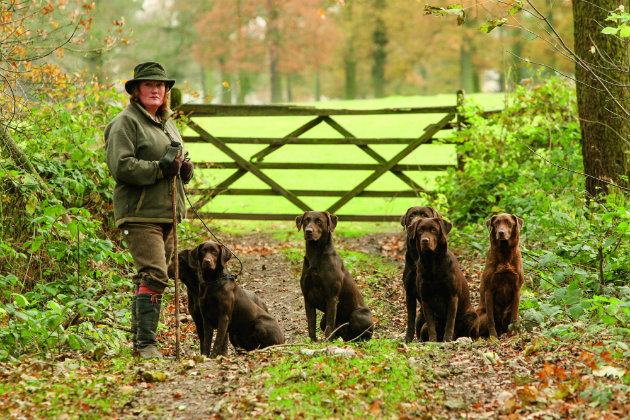
Dorothy Wall-Duffin and her picking-up team of distinctive Labradors out in the field
In the early days, there was no option but to use black bloodlines in conjunction with the chocolates to improve working ability, fix a type and a strong genetic base.
That has undoubtedly been achieved and the success and popularity of the Grangemead dogs in the UK and abroad are testament to that. The kennel now has four different bloodlines, which provide ample options for all breeding plans and avoids the need to seek outside stud dogs.
Air-scenters?
A mix of another breed into black Labradors at some stage in the past may have been the trigger for the emergence of brown-coated dogs — and this could have been the German shorthaired pointer.
“Chocolate Labradors do seem to air-scent when they are working, more so than blacks or yellows, so there could be a pointing breed responsible for that way back in their ancestry,” said Mrs Walls-Duffin.
But she has certainly proved that chocolate Labradors are a force to be reckoned with in the shooting field. “It has taken many years of careful breeding but anyone who sees these dogs working is now realising they have genuine ability as accomplished working gundogs.”
Related Articles
Get the latest news delivered direct to your door
Subscribe to Shooting Times & Country
Discover the ultimate companion for field sports enthusiasts with Shooting Times & Country Magazine, the UK’s leading weekly publication that has been at the forefront of shooting culture since 1882. Subscribers gain access to expert tips, comprehensive gear reviews, seasonal advice and a vibrant community of like-minded shooters.
Save on shop price when you subscribe with weekly issues featuring in-depth articles on gundog training, exclusive member offers and access to the digital back issue library. A Shooting Times & Country subscription is more than a magazine, don’t just read about the countryside; immerse yourself in its most authoritative and engaging publication.




